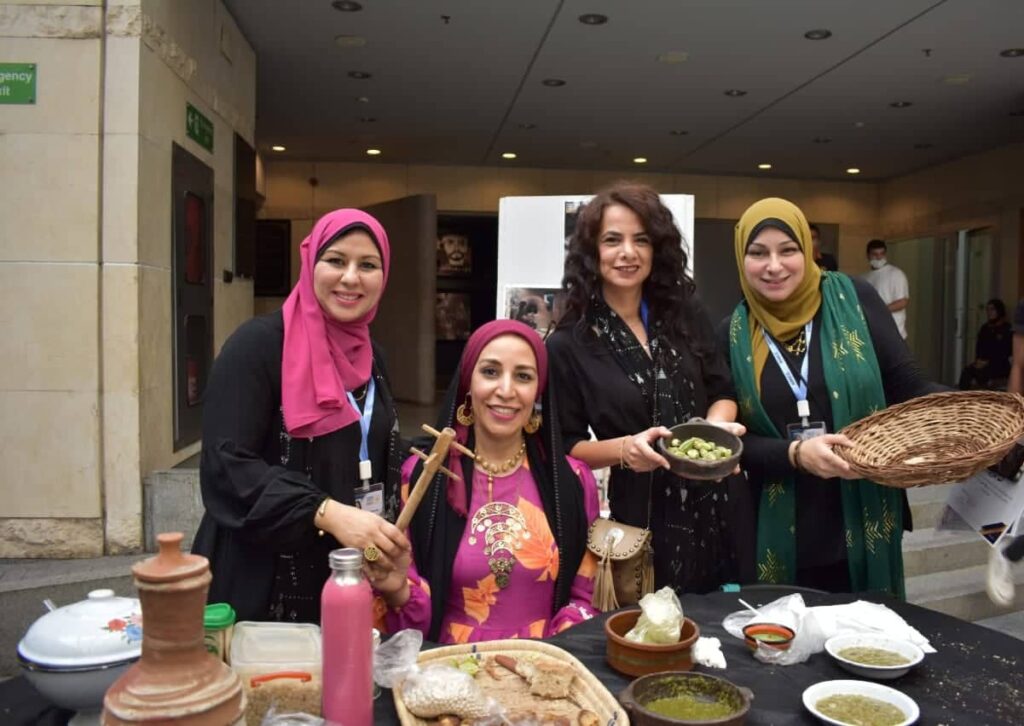National Museum of Egyptian Civilization (NMEC) & Living Heritage (Nagwa Bakr, Egypt, ITP 2019)
Written by Nagwa Bakr, Community Exhibition Officer, Ministry of Tourism & Antiquities, Egypt (ITP 2019)
Since the opening of the National Museum of Egyptian Civilization, the Folk Heritage Department, under the supervision of Nancy Ammar, Manar Hassan, and Germeein George, the museum has presented many events to public visitors in the gallery leading to the main exhibition hall. The purpose of these events is to practically display heritage as well as practicing some heritage activities. A month ago, the museum launched unique event for of the Egyptian governorates’ heritage and aims to shed light on the heritage of each of Egypt’s governorates. The first activity began in July with the heritage of Alexandria governorate.
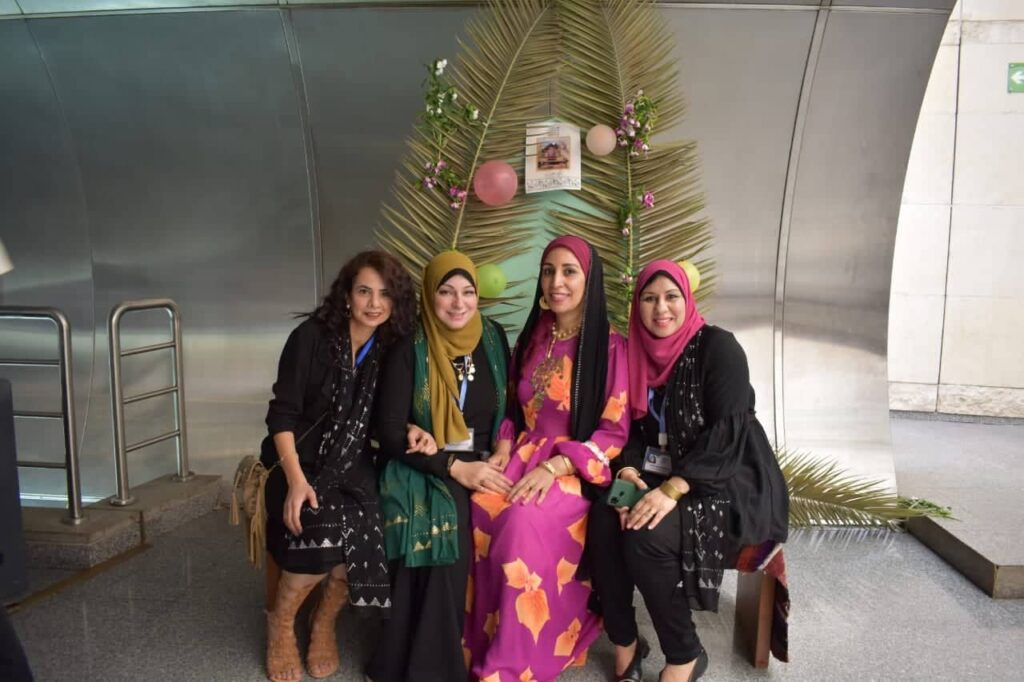
Member of Traditional Heritage Dept @ NMEC (Germeen, Nancy & Manar)
On August 27 2022, the museum presented Asyut Governorate’s heritage. Asyut is the largest city in Upper Egypt. The name of the city is derived from early Egyptian Zawty, which means “Guardian” of the northern approach of Upper Egypt. It gained its importance in ancient Egypt because of its middle location between the provinces of Pharaonic Egypt and for being a major centre for trade caravans heading to the oases in the Western Desert and the beginning of the Arbaeen road that reaches Sudan. In the era of the ancient Egyptian civilisation, Asyut was the base of the thirteenth region, and was inhabited by the Viceroy. In the era of the Greeks, Egypt was divided into the Delta, Middle Egypt, and Upper Egypt, and Asyut was the capital of Upper Egypt, as it was the capital of the northern section during the Roman era. During the reign of ruler Muhammad Ali, Egypt was divided into seven states, one of which includes Girga and Assiut, and its capital is Asyut. It is also one of the most important points of the Holy Family’s journey in Egypt, where there is the monastery of Muharraq, in which the Virgin Mary hid for the longest period she lived in Egypt, and it is considered the first church inaugurated in the world.
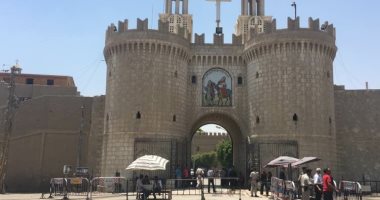
Muharraq Monastery © https://www.masrawy.com/news
The event included:
A photographic exhibition that reflects the cultural and heritage diversity in Asyut Governorate by the photographer Ahmed Mostafa from Asyut. Ahmed has previously participated in the Shutb Heritage Documentation Project with the British Museum; he also has a great Facebook page called (Discover Asyut) that documents Asyut daily life by Camera. Link for the page https://www.facebook.com/Discover.Assiut

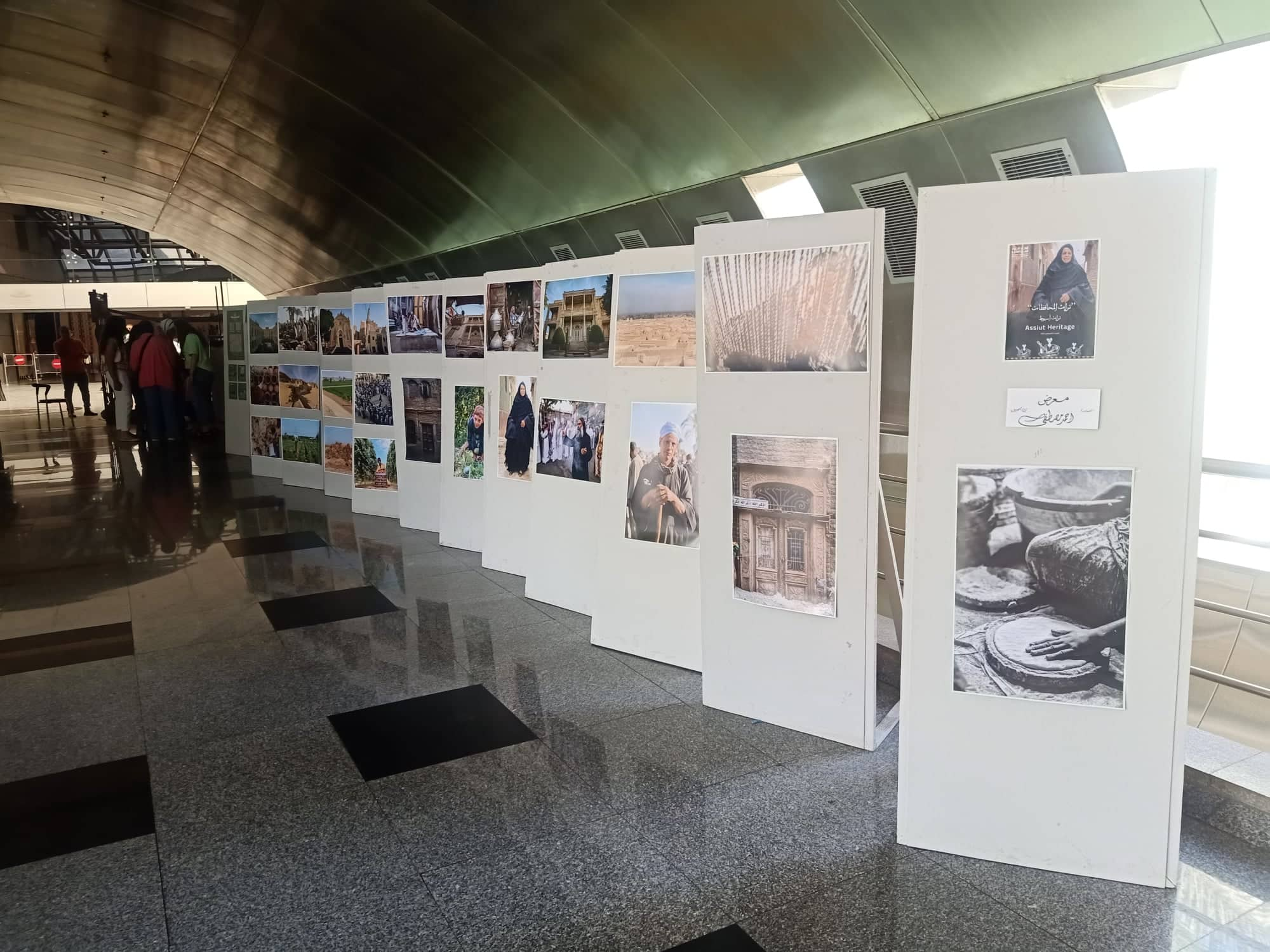
Photos of Discover Asyut by Ahmed Mostafa (Ahmed Dream)
There is also a workshop like no other, the tulle-bi-telli is a traditional metal thread embroidery that weaves grace and elegance together. Born in the Upper Egyptian city Asyut, the beautiful textile marries cotton or linen mesh with small strips of metal. The textile is rendered using a variety of stitches, resulting in highly textured designs with beautiful patterns. It is known as Al-Telie Al Assiouti. Some think that this name is due to the name “network” or “tull” in French, which is used as a base for embroidering the talus. it was made by craftsmen who used to embroider linen, silk, and cashmere fabrics with gold and silver threads as to give the final product an additional luster.
The art of embroidery has been linked to Egyptian customs and traditions. Embroidery has been long prominent in Egyptian culture during the 1930s when it was used to make belly dancers’ costumes. Telie Al Assiouti became threatened with extinction at the end of the last century, and with the support of UNESCO and the National Council for Women. It provided many workshops to revive the craft and teach girls the secrets of the craft. Recently, there are many women working on reviving the craft. Ms. Magda one of the most famous craftsmen in the art of Talli participated in an interactive workshop with the public at the museum about the types of embroidery and symbols used that reflect heritage concepts.
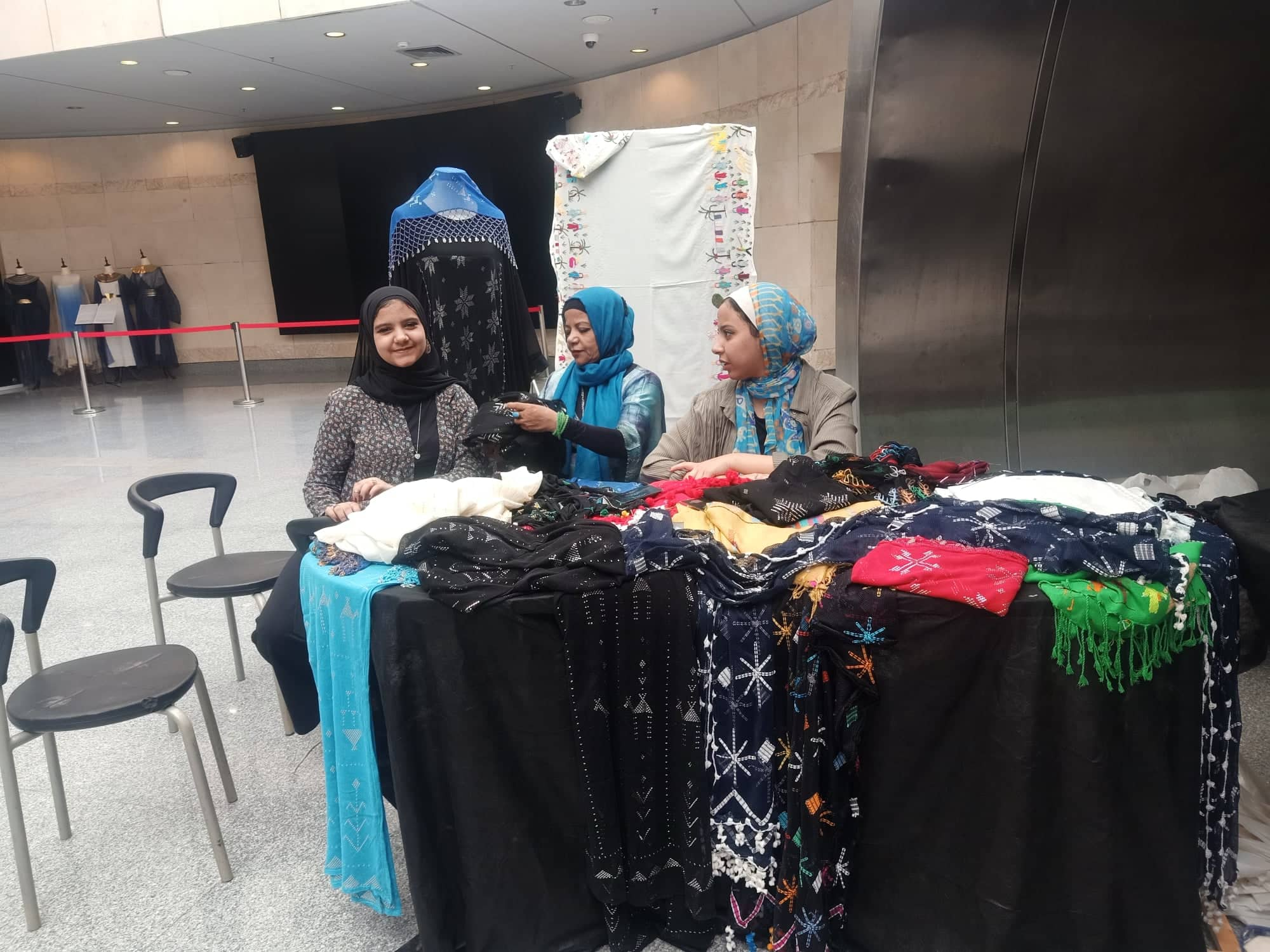

Ms. Magda with her daughter making Talli
The event also included an interactive workshop for the manufacture of Asyut Kilim (rug) on the loom” Al kilim al-adawwi “distinguishes the village of Bani Udayat in Asyut, so the name “al-kilim al-adawwi” was given to the kilim in relation to Bani Uday, which is distinguished from other villages. It is one of the most famous villages. It is the only one in the Arab Republic of Egypt that manufactures kilims (rugs) from natural wool with high quality raw materials, without any threads or other materials added to it.
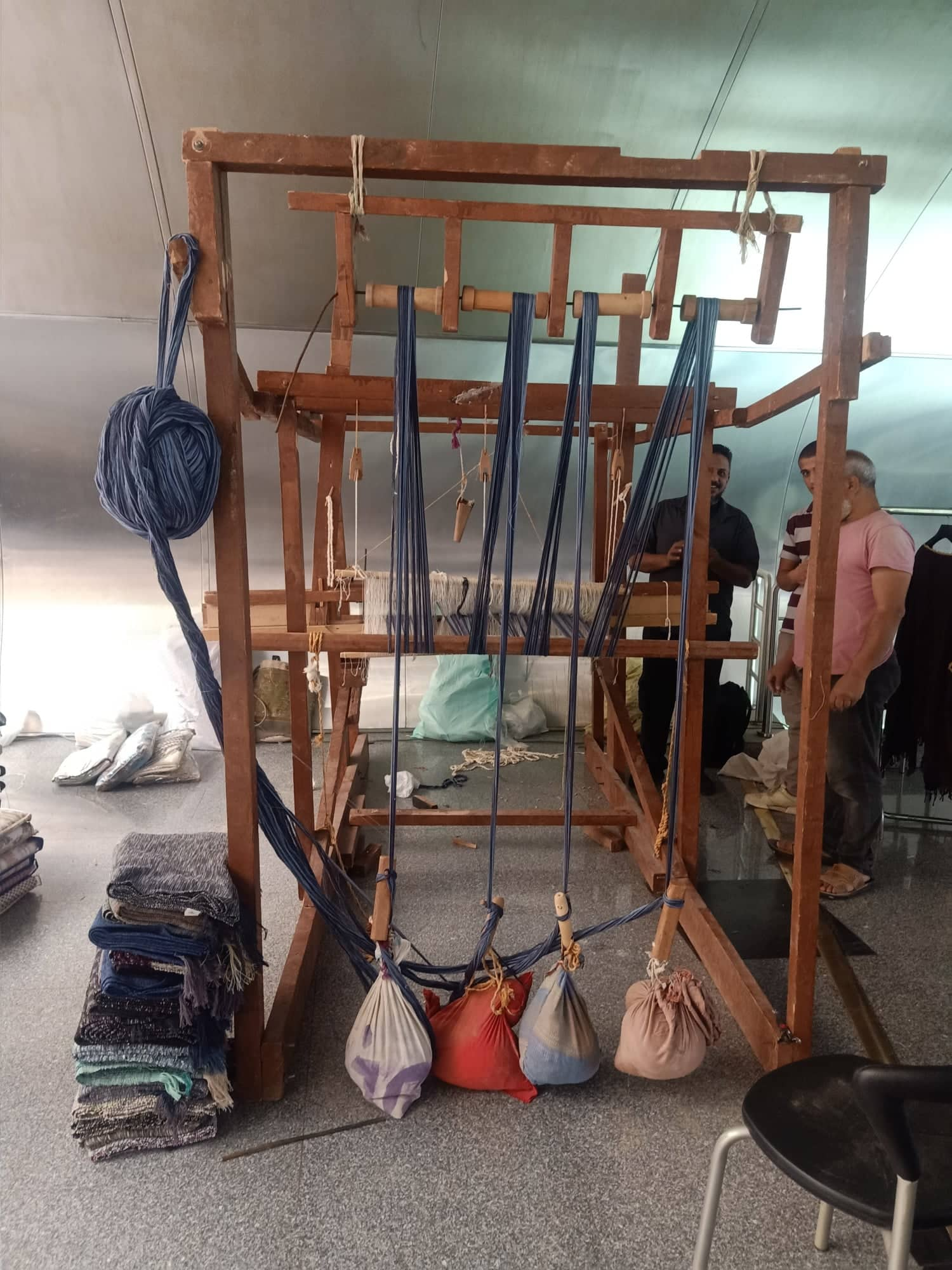
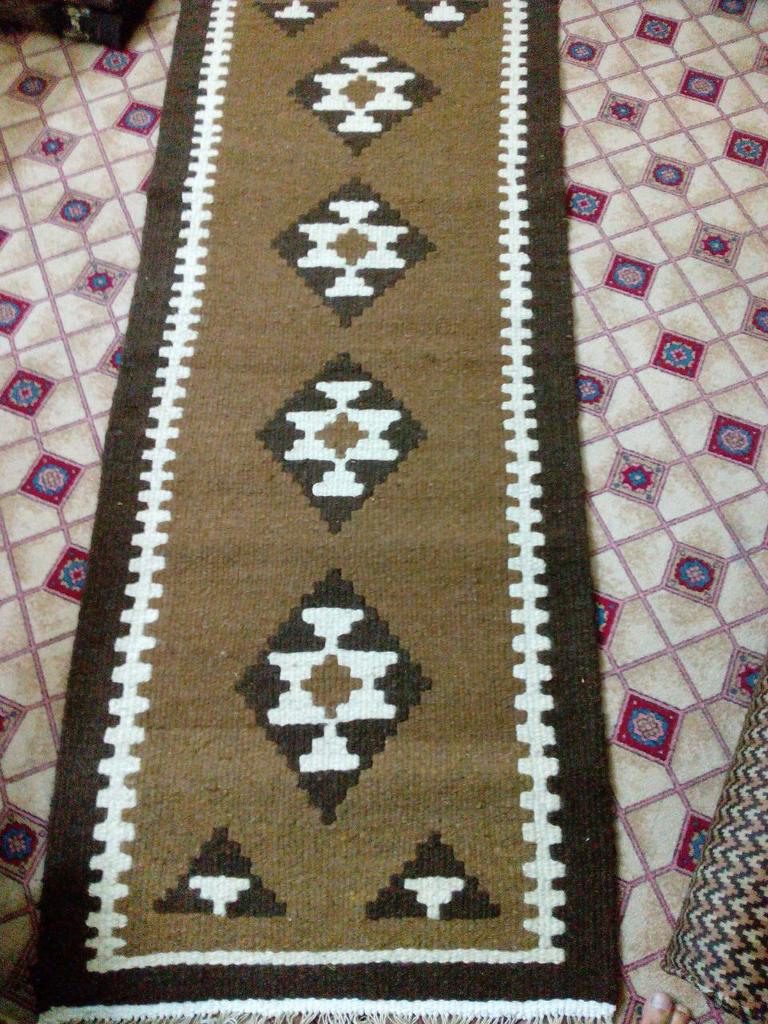
There was also a performance of the famous “Rababa” musical instrument in Upper Egypt with traditional songs, the audience cheerfully participated in the singing party.
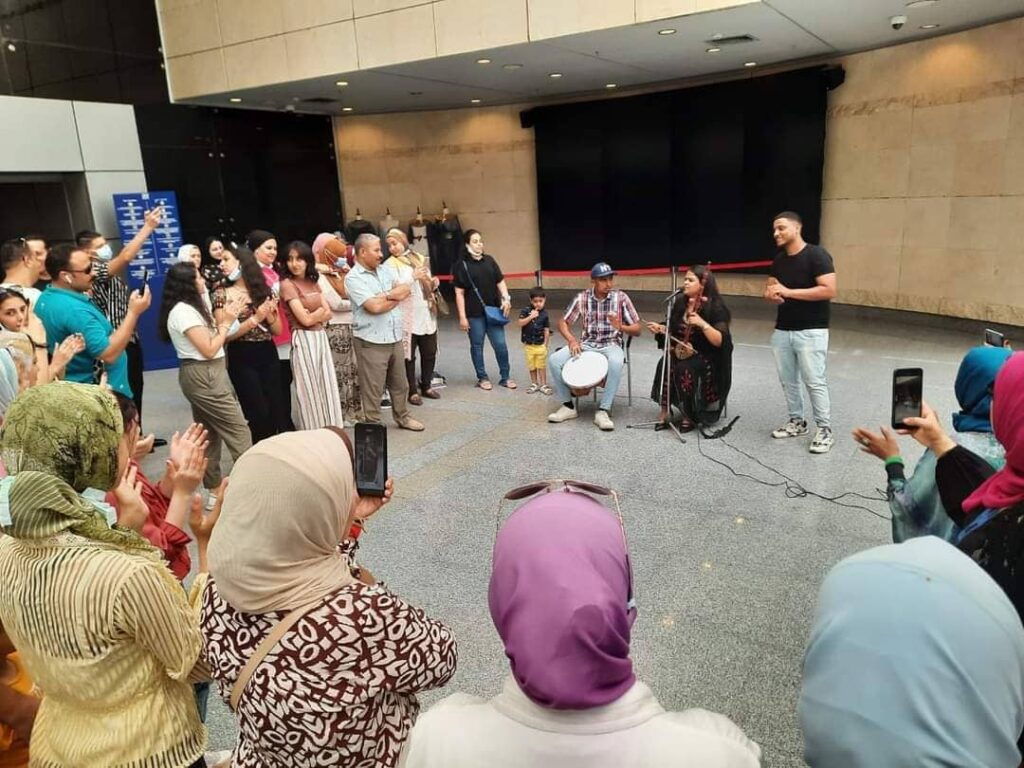
I actively participated in a workshop about traditional cooking. It is considered the second active participation in food recipes in Egyptian museums. A workshop on traditional foods in Upper Egypt was previously presented under the title “Sa’eda’s Tabikh” meaning (Upper Egyptian Kitchen) at the Baron Palace, on the sidelines of the celebration of the Sustainable Gastronomy Day June 18th. The workshop was presented to a group of elderly people to help stimulate their memories of traditional food recipes.
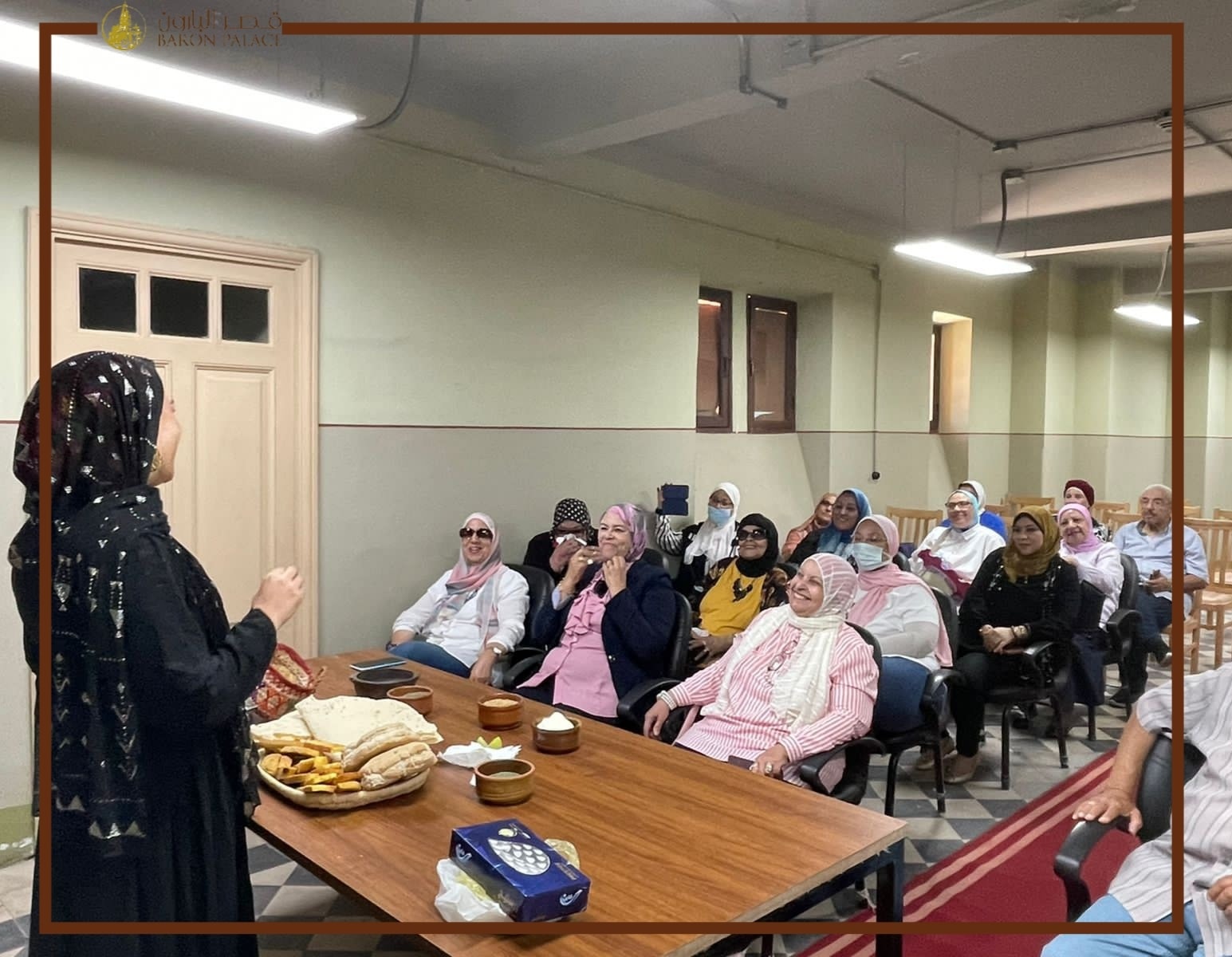
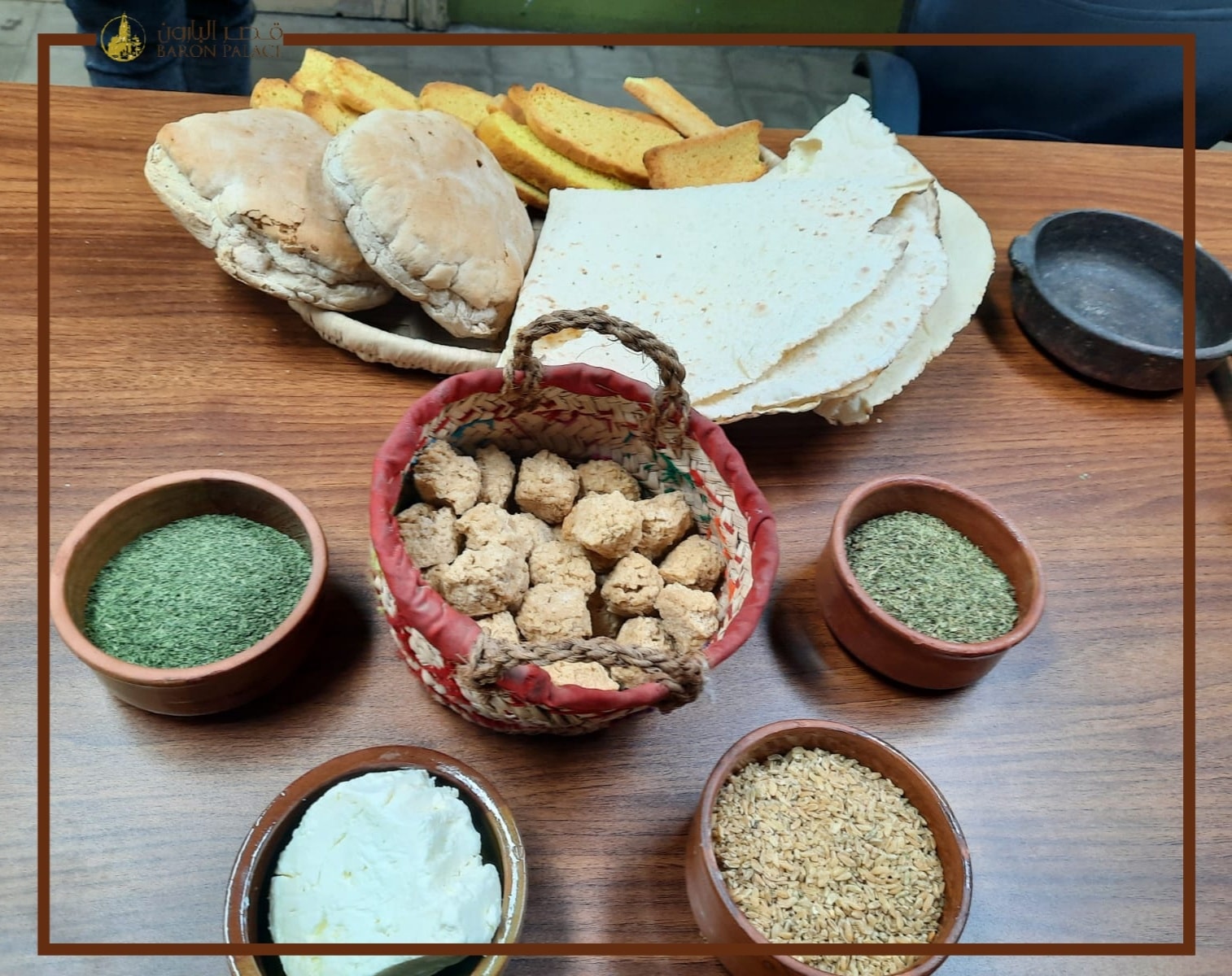
(Upper Egyptian Kitchen) at the Baron Palace, on the sidelines of the celebration of the Sustainable Gastronomy Day June 18th
What distinguishes the traditional culinary art workshop that was presented at the Asyut Governorate’ heritage at Museum of Civilization event is the interactive workshop for the audience visiting the museum and does not target a specific group, which gave the opportunity for most visitors of all categories and nationalities to participate in learning about the Asyut cuisine and the most famous dishes and their importance in terms of food.
Most of the foods were associated with wheat, the main crop of Egypt, from which bread and various types of recipes were made, which were eaten in the winter and prepared from the summer, due to the high temperature that helped dry the main ingredients and then in the stages of preparation for eating, they were mixed with butter, milk, and honey to supply the body with energy. Most of these dishes are threatened with extinction, as well as main foods on the lunch meal such as Mulukhiyah dishes called (Shalolo) which dates to the ancient Egyptian civilization and okra, one of the most famous dishes on the dining table in Upper Egypt, especially in the summer and during the fasting period of the Virgin Mary, because they are vegetarian foods. Many of the participants expressed their admiration for the flavour of the food, and many thanked me because their wishes were to taste these traditional foods. Many foreigners also participated in experimenting with the ingredients of the dishes and tasting some foods. Documenting the Upper Egyptian cuisine and traditional recipes is one of the projects that I have been working on recently to revive these dishes, especially after the impact of climate change on agriculture and the disappearance of many crops, as well as with the emergence of fast foods, which affected the disappearance of many traditional foods.
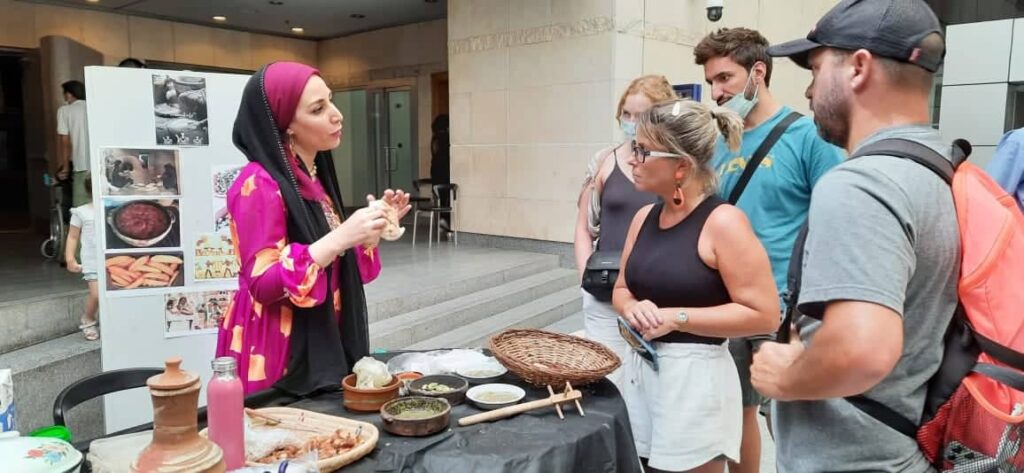
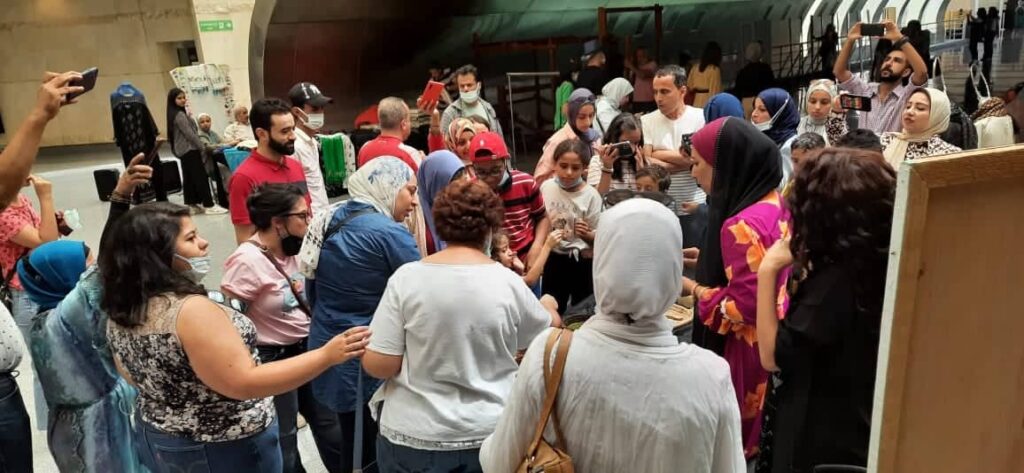
In presenting the workshop, I was keen to wear the traditional clothes from my village, as well as the design of the traditional wedding kosha, which was common in the villages of Upper Egypt in the past, which was made of palm leaves and decorated with flowers and balloons.
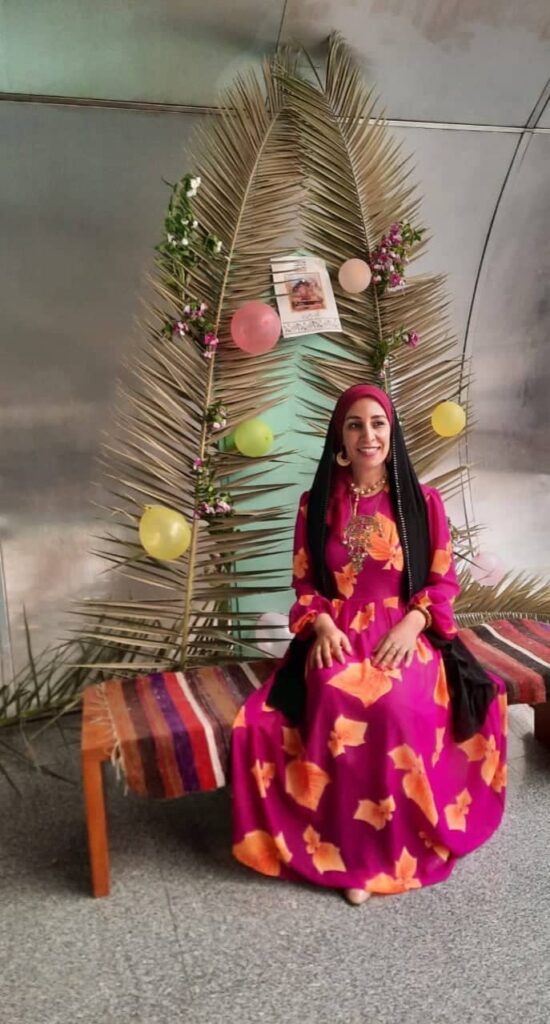
Traditional cloths & accessories in some Asyut villages & wedding Kosha
It can be said that the National Museum of Egyptian Civilization is considered one of the first museums in Egypt that came out of the traditional display of heritage and antiquities to interactive displays that allow the public to participate, interact, practice heritage, and learn about it.
Thank you to the team of the National Museum of Civilization for these wonderful initiatives in reviving heritage and linking it to visitors.
